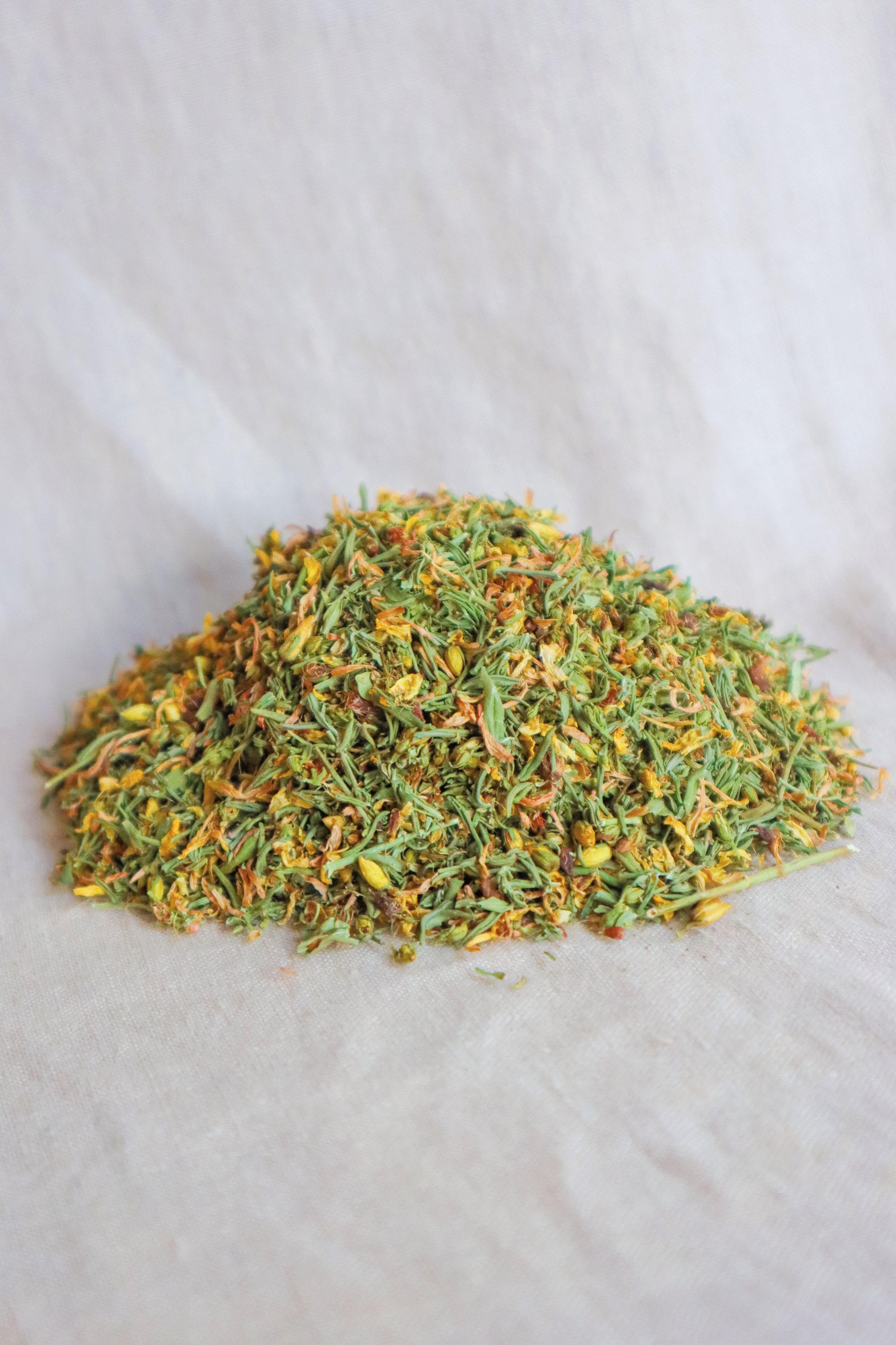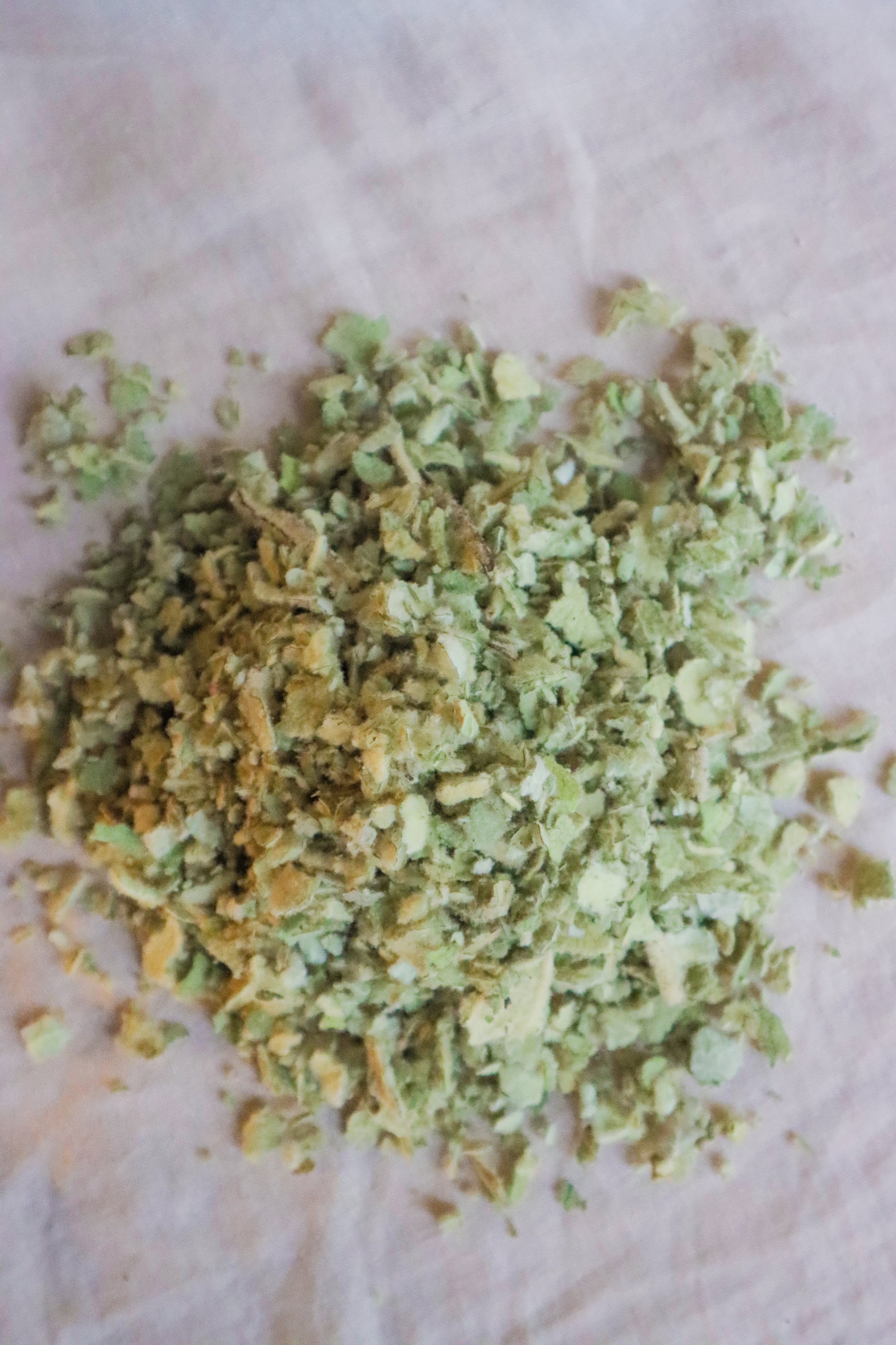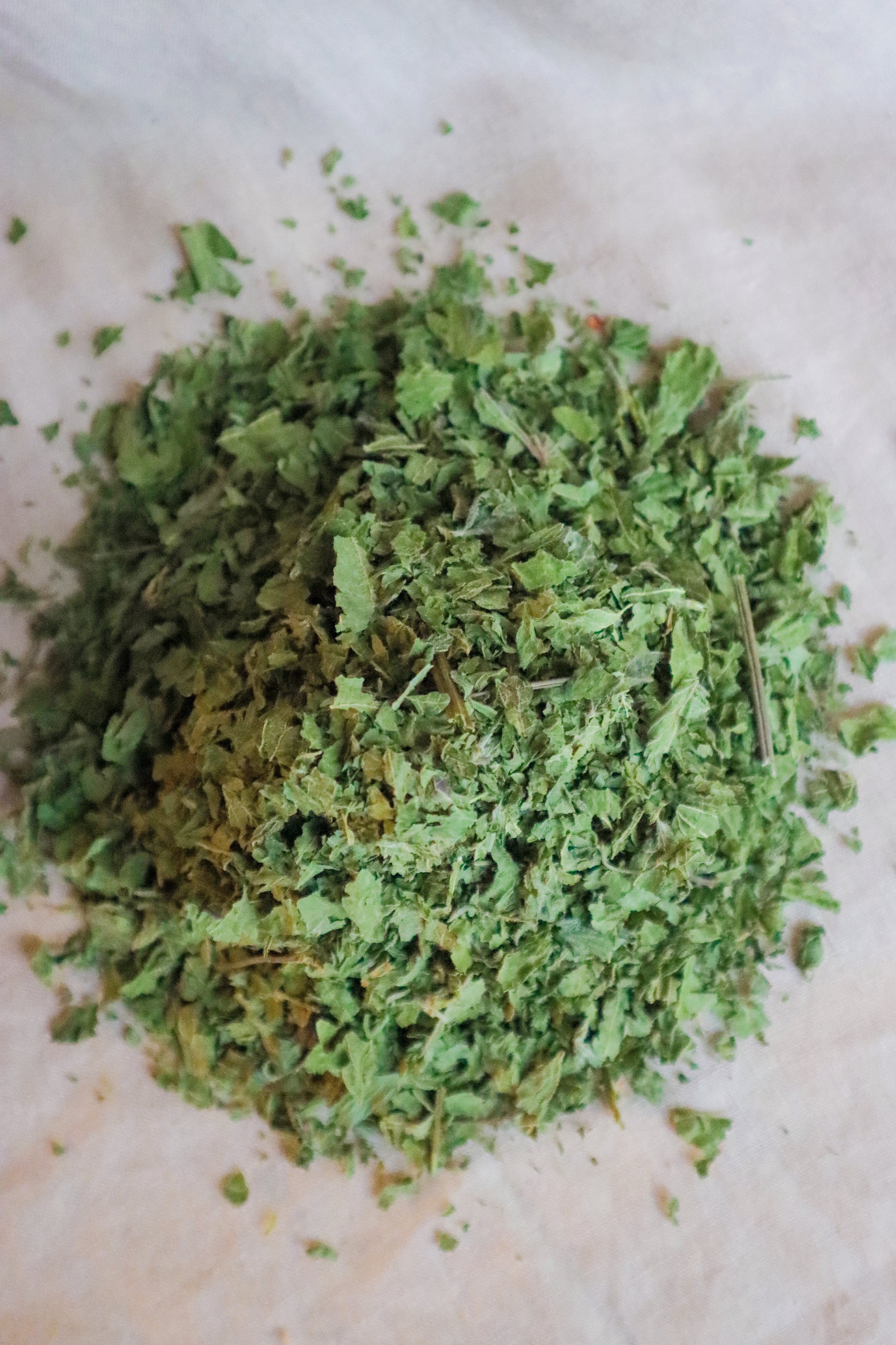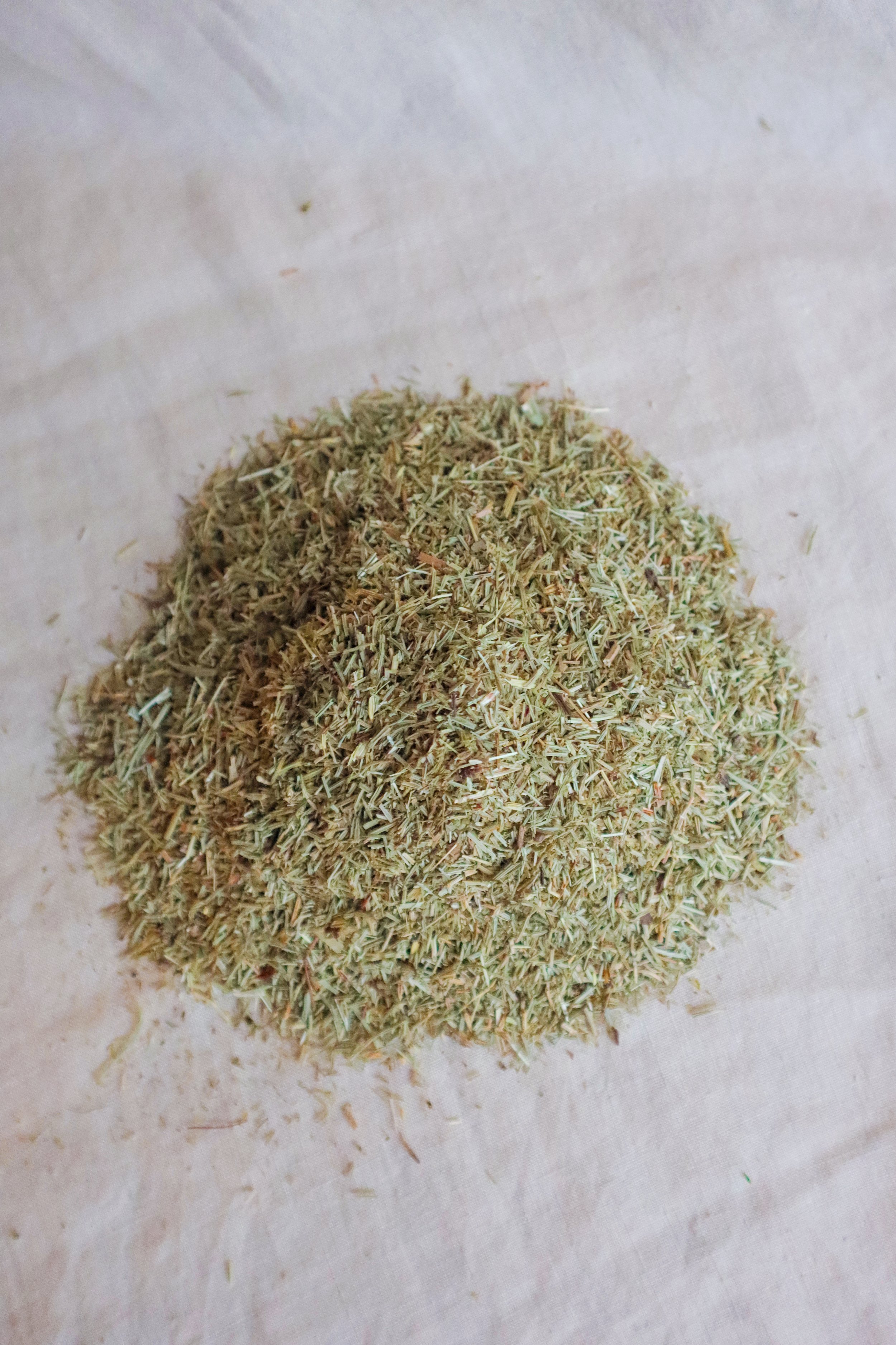 Image 1 of 2
Image 1 of 2

 Image 2 of 2
Image 2 of 2



ST. JOHN’S WORT | Hypericum perforatum
This midsummer flowering plant shows us much about its use through its appearance and time of flowering. A solar plant, St. John’s Wort helps to heal burns topically, as well as wounds. Healing tissue from the bottom layer up, a poultice of St. John’s Wort may help to heal puncture wounds properly. St. John’s Wort may also help ease symptoms of seasonal depression when taken in the months when the sun is lowest. It also has analgesic and nervine properties which make it a supportive remedy for nerve pain, topically and inernally.
This beautiful plant of the wayside is named for St. John the Baptist, who was said to be born at midsommer. The red sap contained in the flowers which give the tea, tincture, infused fat, and infused honey of St. John’s Wort, its signature red, is said to be the blood of St. John or the Blood of the Sun. Its latin name family, Hypericum, means “above an apparition,” indicating that this plant is protective against unwanted spirits.
Part: Flowering tops
Sold by the ounce
This midsummer flowering plant shows us much about its use through its appearance and time of flowering. A solar plant, St. John’s Wort helps to heal burns topically, as well as wounds. Healing tissue from the bottom layer up, a poultice of St. John’s Wort may help to heal puncture wounds properly. St. John’s Wort may also help ease symptoms of seasonal depression when taken in the months when the sun is lowest. It also has analgesic and nervine properties which make it a supportive remedy for nerve pain, topically and inernally.
This beautiful plant of the wayside is named for St. John the Baptist, who was said to be born at midsommer. The red sap contained in the flowers which give the tea, tincture, infused fat, and infused honey of St. John’s Wort, its signature red, is said to be the blood of St. John or the Blood of the Sun. Its latin name family, Hypericum, means “above an apparition,” indicating that this plant is protective against unwanted spirits.
Part: Flowering tops
Sold by the ounce
This midsummer flowering plant shows us much about its use through its appearance and time of flowering. A solar plant, St. John’s Wort helps to heal burns topically, as well as wounds. Healing tissue from the bottom layer up, a poultice of St. John’s Wort may help to heal puncture wounds properly. St. John’s Wort may also help ease symptoms of seasonal depression when taken in the months when the sun is lowest. It also has analgesic and nervine properties which make it a supportive remedy for nerve pain, topically and inernally.
This beautiful plant of the wayside is named for St. John the Baptist, who was said to be born at midsommer. The red sap contained in the flowers which give the tea, tincture, infused fat, and infused honey of St. John’s Wort, its signature red, is said to be the blood of St. John or the Blood of the Sun. Its latin name family, Hypericum, means “above an apparition,” indicating that this plant is protective against unwanted spirits.
Part: Flowering tops
Sold by the ounce
-
While fresh St. John’s Wort is best for making belove St. John’s Wort oil, the dried flowers make a delicious tea. Steep for 5-15 minutes.
-
Antidepressant, nervine, analgesic, vulnerary
-
St. John’s Wort interacts with several pharmaceutical medications and it is best to consult your doctor if you are taking any, before consuming St. John’s Wort.
It may also cause sensitivity to light in fair skinned folks.
-
Organically grown in Oregon.
-
These statements have not been evaluated by the FDA. This product is not intended to diagnose, treat, cure, or prevent any disease.




